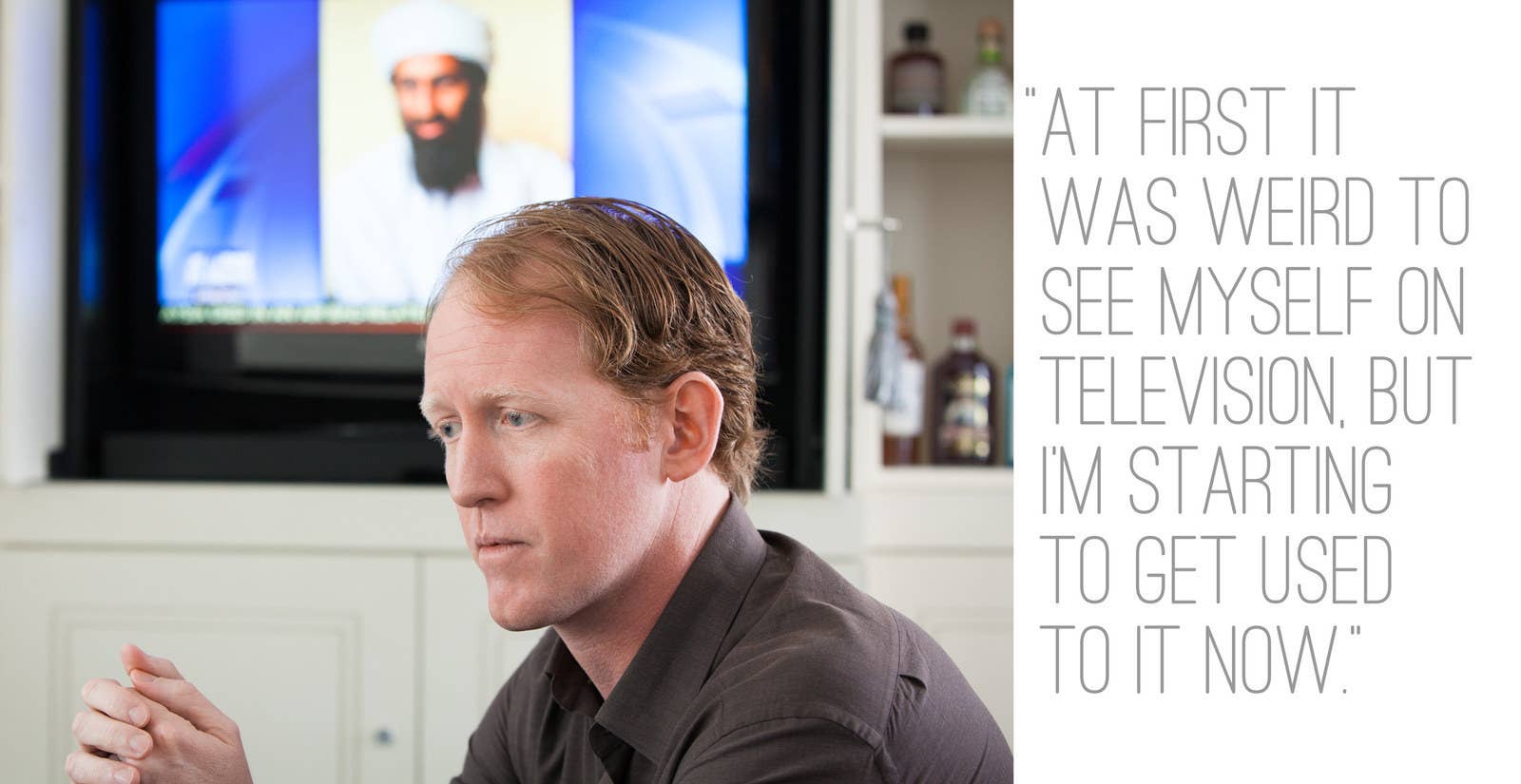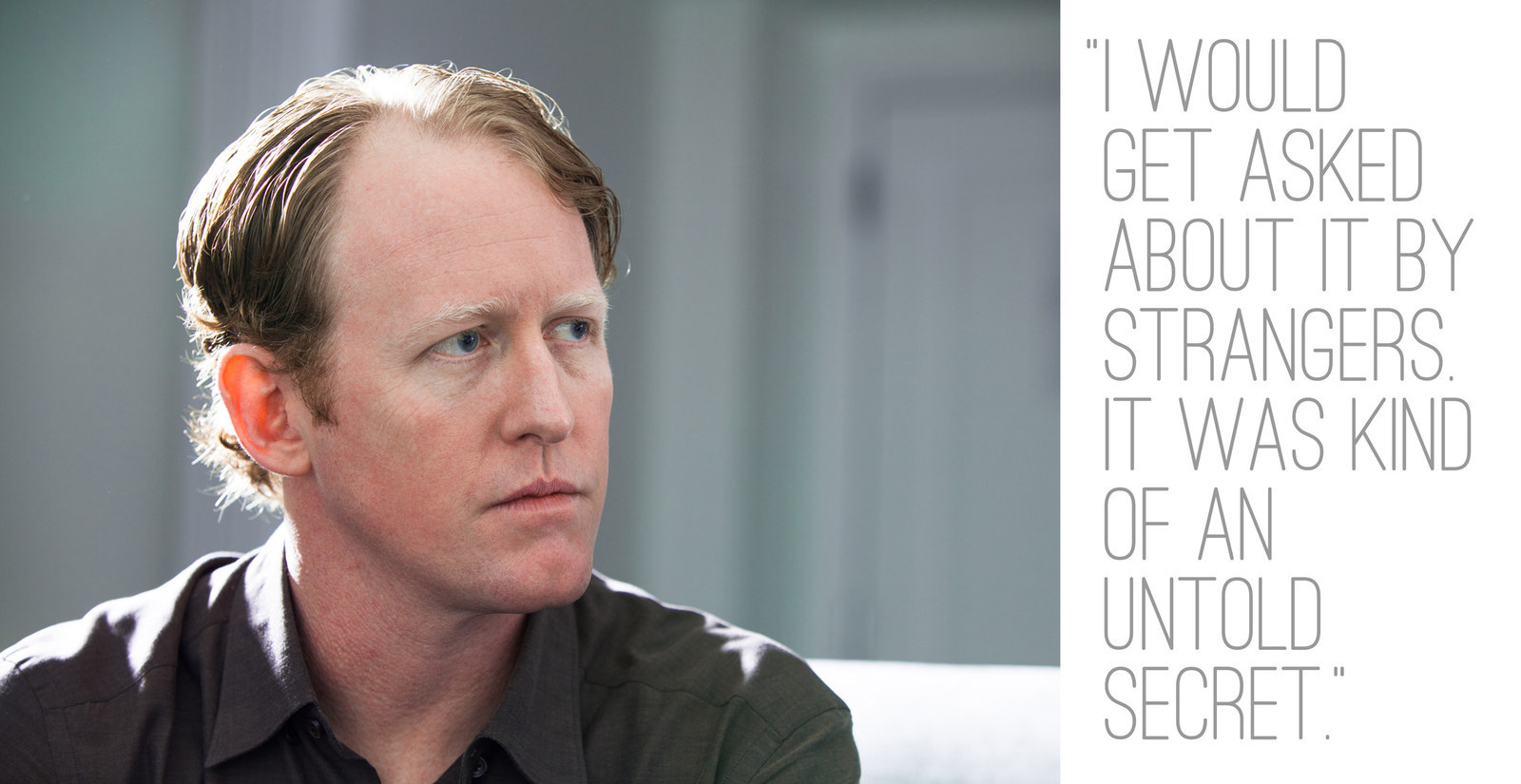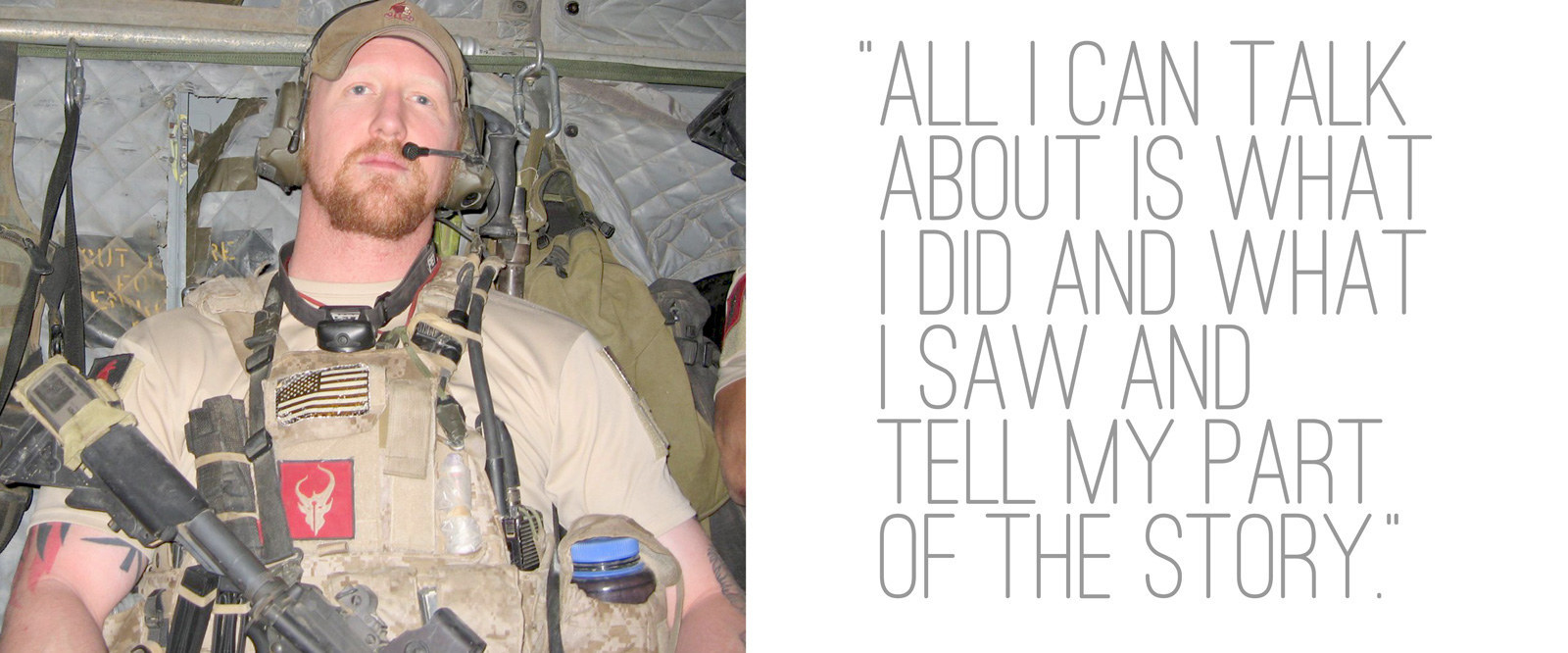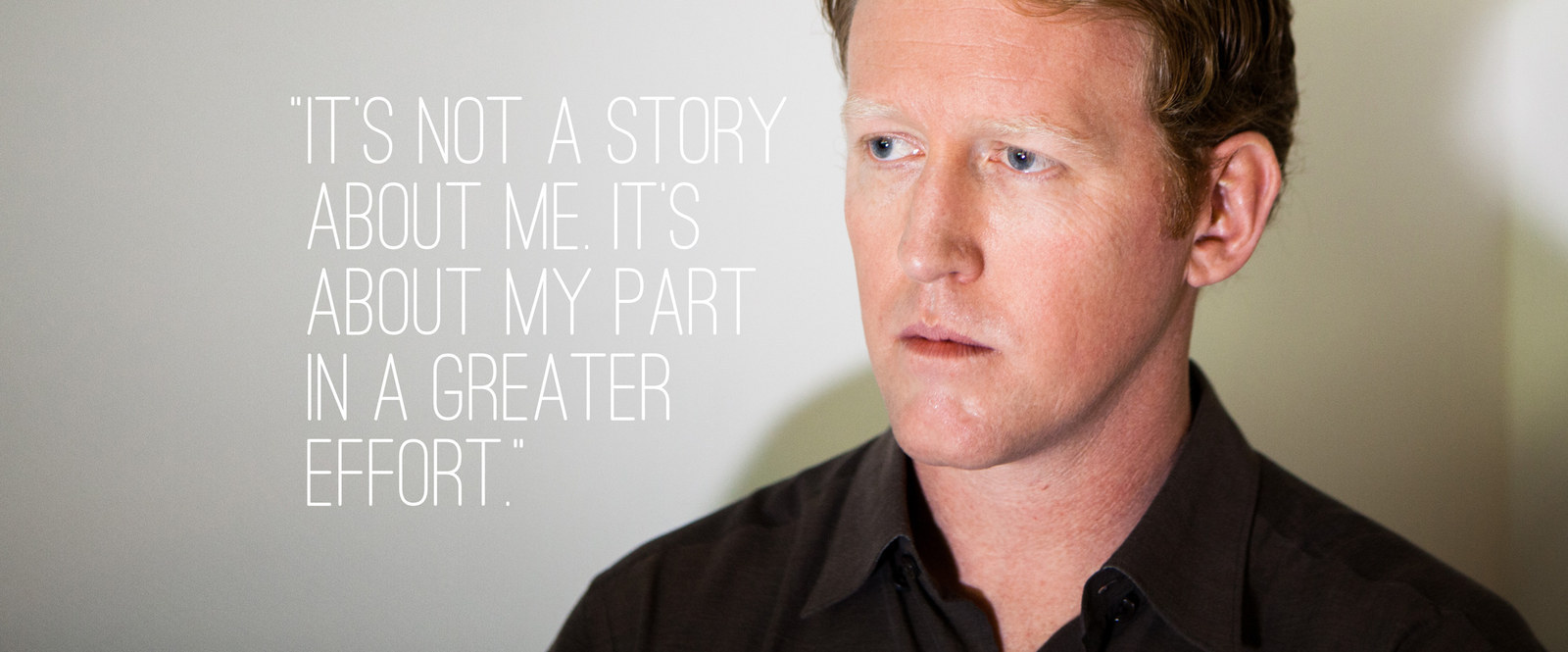When he was younger, Rob O’Neill used to joke with his mother that he was put on Earth to do something special. “I would say that to her when I joined the Navy, when I was going through training,” he said. “Then when we started going through combat I would say that to her again, just more to ease her mind. Not really believing it.”
“But then when this happened,” he said, “when I was able to be put in a position, because of my team, to do something that would have a big impact on everything, it did hit me that maybe somehow it wasn’t tongue in cheek. But it’s not like I was seeing the future. It was just something that happened.”
O’Neill is the first to admit his place in history hinges on a single-second moment when his Navy SEAL instinct and training kicked in, and he fired the fatal shots that killed Osama bin Laden. The moment was the culmination of years of painstaking intelligence work and extensive military planning. It seemed to bookend the first decade of the 21st century, when the Western world had learned words like “jihad” and “al-Qaeda,” and had become accustomed to airport security body scanners and pat downs. It has also irreparably changed O’Neill’s life — although faced with a lifetime of fame, security threats, and criticism from his peers, he can’t decide if it’s for better or worse.

Moments after he first met with BuzzFeed News in a dimly lit café attached to the lobby of his upmarket hotel on Manhattan’s Upper East Side, O’Neill had to excuse himself, head upstairs to his suite, and make sure the place was presentable before we joined him. The café was quiet but full of travelers having breakfast, stocking up for a day on their feet in Central Park or the Metropolitan Museum of Art, which were a stone’s throw away.
O’Neill, though, didn’t have time for sightseeing on this trip to New York; he was in the middle of a media blitz. He had finished with Fox News and the Washington Post, but he was still prepping for the Today show,the New York Times, and CNN.
He came back down to fetch us and settle the bill. The coffees were on the house. Such are the perks of being the man who killed the world’s most wanted terrorist.
“I think that they did a good job with the interview,” he said up in his suite, sitting on a plush sofa in front of the flat-screen television where during the previous evening he had watched the second installment of his interview on Fox. “I think it remained positive. At first it was weird to see myself on television, but I’m starting to get used to it now. Obviously it’s been on quite a bit.”
Pinned to the lapel of his suit was an American flag pin so large it would make a politician blush. Stripped of the heavy makeup he wore during the Fox interview, he looked considerably less tanned, unsurprisingly, with a ruddy complexion and translucent eyebrows.
In the aftermath of the May 2011 raid on the al-Qaeda leader’s compound in Abbottabad, Pakistan, Americans were quick to embrace as heroes the faceless commandos behind the raid. Vendors selling unauthorized Seal Team 6 merchandise quickly sprung up. Hollywood followed swiftly behind with Zero Dark Thirty, the film that dramatized the CIA hunt to find bin Laden, opening to both acclaim and controversy.
O’Neill, profiled anonymously by Phil Bronstein for Esquire in February 2013, is now stepping into the spotlight, shedding what Bronstein described as the “thick blanket” of secrecy that inelegantly covers special operations forces troops. Perhaps ironically, he is coming forward at a time that al-Qaeda seems to be fading from the foremost fears of most Americans, replaced by a group somehow even more malevolent: the Islamic State of Iraq and Syria, or ISIS, the militant group that emerged from the chaos of the Syrian civil war, before seizing large amounts of territory in neighboring Iraq as well.
O’Neill said he was forced out, worried his name was about to be leaked — although he wouldn’t say who was set to expose his identity. “It seems like [my name] was already out there,” he said. “In certain places where I’ve lived and some places where I would go some people would know already. I would get asked about it by strangers. It was kind of an untold secret.”

O’Neill’s decision to come forward, and in such a public manner, has prompted criticism in military circles. When word of the planned Fox interview leaked, SOFREP, a website run by former special forces members, decided to publish O’Neill’s name, critical of his decision to “seek notoriety.”
“There’s a reason they are upset,” Brandon Webb, a former SEAL and editor of SpecialOperations.com (a sister website to SOFREP), told BuzzFeed News.
“He was read on to a special access program,” Webb said, referring to security missions containing highly classified information. “You don’t talk about it, period. If you’re going to mention anything, you have to get clearance. People are disturbed because these guys signed agreements and they have to hold people accountable that read into these programs.”
Marine Corps veteran and executive editor of military blog We Are the Mighty Paul Szoldra also believes there is something to be said for the “quiet professional.”
“I can understand this is a big story the public wants to know about, but the reason our special operations forces are often successful is because we are good at keeping those missions, and our tactics, secret,” Szoldra said.
In an Oct. 31 letter to Naval Special Warfare “teammates,” the senior leadership of the Navy SEALs, Rear Adm. Brian Losey and Force Master Chief Michael Magaraci, reminded them to avoid the limelight. “A critical tenant of our ethos is 'I do not advertise the nature of my work, nor seek recognition for my actions,’” the letter read. “We will not abide willful or selfish disregard for our core values in return for public notoriety and financial gain, which only diminishes otherwise honorable service, courage and sacrifice.”
O’Neill bluntly rejects the suggestion he is seeking fame or fortune, and his media team are adamant that he hasn’t accepted payment for any of his interviews. “My response is that they had to respond,” he said of the leadership's letter. “While I respect the opinions of others that weren’t there, I think that it’s a big story and it’s historic and I just want to tell my part of it.”
O’Neill is not the first of his teammates to come forward. In his September 2012 account of the raid, No Easy Day, Mark Bissonnette — writing under the pen name Mark Owen — recounted being part of the unit that entered the third-floor bedroom of bin Laden. An unseemly debate of sorts has since played out in the press about who fired the fatal shots: O’Neill or an unnamed "point man" who led the unit into the room, but who O’Neill says tackled two of the women hiding in the bedroom, allowing him to take aim at bin Laden and fire. Of course, the point man himself is the one person who may be able to settle the issue, but O’Neill wouldn’t say whether the two have been in conversation.
“I think that it’s a fog of war,” he said of the conflicting version of events. “Combat is foggy. For people that were there, they may have their own story. All I can talk about is what I did and what I saw and tell my part of the story.”
In his Esquire interview, O’Neill had acknowledged the fury in the SEAL community when Bissonnette released his book. “There’s a shitstorm around this,” he told Bronstein. When questioned what it’s like to now be on the other side of the storm, O’Neill wouldn’t say whether his former comrades are justified in their anger.
“I can’t speak on their behalf,” he said. “One of the things that we do these missions for and fight for is freedom, and I hope they have their own opinions. That’s a great thing. If they disagree with me, that’s fine.”

Paul Szoldra believes that by coming forward O’Neill has placed the entire mission’s success “on his own shoulders.” “He may not be trying to portray it that way,” Szoldra said, “but that's the perception among the public, and if I were his teammate, I would be angry with him for taking credit for something that was a massive team effort.”
But in addition to the care, O’Neill says that he takes not to discuss classified information in order — he hopes — to avoid prosecution; he was at pains during our interview to make sure he stressed his role as part of a team, lest he be seen to buy in to the moniker the media has given him as "the man who killed bin Laden."
“It’s bigger than me because I’m sharing a portion of a great story,” he said. “I’m telling people what I saw. There were so many people who put so much more effort into this one effort than I did. It’s the intelligence people that found him. It’s the pilots that flew us in, that risked their lives. It’s the aircrew that opened the doors so we could get out. It’s the other Navy SEALs that did their jobs all the way up the stairs. I was brought there because of them.
“Then it’s the 9/11 families. It’s the people who died on 9/11. It’s the entire story that’s bigger than me, and it’s not a story about me. It’s about my part in a greater effort.”
Other individuals involved in the manhunt or raid may never come forward. Certainly, if they do, there won’t be the same level of media interest that is reserved for the one who pulled the trigger. O’Neill said he is determined to use his place in history — his “platform,” as he describes it — to benefit as many of his former colleagues as he can.
O’Neill spoke openly of his troubles in transitioning from the battlefield, the uncertainty he felt in leaving the Navy, unsure of how desirable his combat skills would be in the private sector. He has now helped to start a foundation that assists combat veterans return to civilian life. “Hopefully, the [members of the SEAL community] that do disagree with me, when they see what we’re doing with this platform and helping the Vets transition from where they are to where they can be, hopefully we can win over the people that disagree,” he said.

Throughout the interview, O’Neill was careful and deliberate in his responses. While he posed for photos, his publicist joked that O’Neill’s media onslaught is akin to transitioning to a “whole different battlefield, where the bullets are questions.” When conversation turned to the controversial name of his favorite football team, the Redskins, his media training vanished for a moment and he was caught off guard. Ever the military man, he quickly found his footing.
“It’s not my area of expertise,” he said. “I personally am not offended by it. I’d like to see it stay what it is, and that’s probably because I grew up with it. That’s obviously a hot debate for somebody else.”
So what do you do with your life once you admit to killing bin Laden? To start, O’Neill wasn’t sure whether he’ll be followed by a security detail for the remainder of his days, but said that, as a family man, safety is a concern for him. As we spoke, outside his suite were two burly but polite security guards wearing buttons emblazoned with the Fox network logo. “It’s funny,” O’Neill said of the men’s job guarding him. “I know how to do some of that stuff.”
As for what comes next, in addition to continuing working as a motivational speaker, he again reiterated that he wants to use his platform in positive ways.
“I don’t think I’ll ever have a normal job,” he said, “but I think I’ve been given a platform where I can use that to help others that are in the situation that I was in. It won’t be a normal 9-to-5 job. But, like I said, with the platform I have I’ll be able to help others, which is what I’m doing now.”
At one point, the muted TV behind him suddenly flashed an iconic image of bin Laden, before O’Neill himself appeared on screen as a talking head.
“I’d seen myself on a few internet videos before but never my entire face taking up the screen on television,” he said of the Fox interview. “I feel like my message was the way I’d like it to be told. The whole thing is bigger than me. It’s just a great story.”
